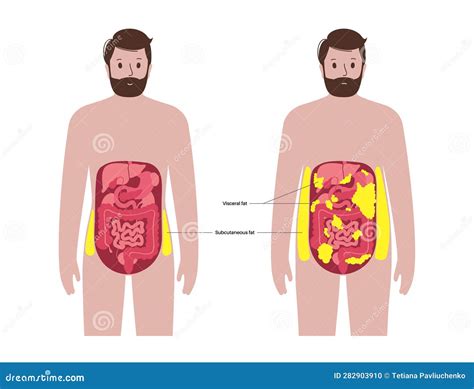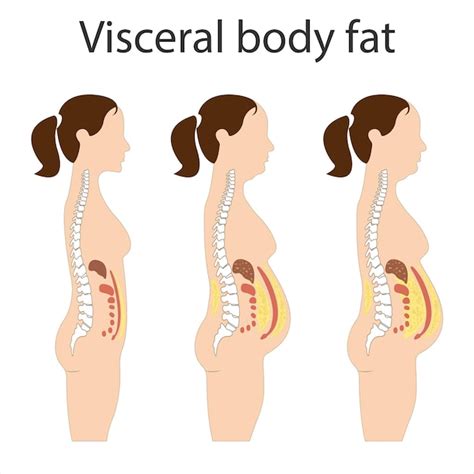As men journey through different life stages, their bodies undergo a myriad of changes, and one of the most significant yet often overlooked transformations is in the way they store fat. What begins as a relatively even distribution in younger years often evolves into a more centralized accumulation, particularly around the abdominal area. This shift is not merely aesthetic; it carries profound implications for men’s health, primarily driven by the increase in visceral fat.

The Shifting Landscape of Male Body Fat
During early adulthood, men typically have a higher proportion of muscle mass and a lower percentage of body fat compared to women. Fat, when present, tends to be distributed more broadly, including in subcutaneous layers (just under the skin) across the body. However, as men enter their 30s, 40s, and beyond, a gradual but discernible change begins. There’s a tendency for overall body fat to increase, even if weight remains stable, due to a decrease in lean muscle mass (sarcopenia) and a slowing metabolic rate.
Crucially, the location of this fat deposition changes. Instead of subcutaneous fat being the primary storage, there’s a pronounced shift towards internal fat accumulation, specifically visceral fat.
Understanding Visceral Fat Accumulation
Visceral fat is a type of body fat that is stored deep within the abdominal cavity, surrounding vital organs such as the liver, pancreas, and intestines. Unlike subcutaneous fat, which lies just beneath the skin and serves as an energy reserve and insulator, visceral fat is metabolically active. It releases inflammatory molecules (cytokines) and fatty acids directly into the portal vein, which carries blood to the liver. This can lead to insulin resistance, increased production of harmful cholesterol, and systemic inflammation.
The accumulation of visceral fat accelerates with age in men. While a healthy amount is necessary for organ protection, excessive visceral fat is strongly linked to numerous health problems. This phenomenon often manifests as an expanding waistline, even in men who might not appear overtly obese.

The Role of Hormonal Changes
Several physiological changes contribute to this age-related shift. A primary driver is the natural decline in testosterone levels, which typically begins in a man’s late 20s or early 30s and continues throughout life. Testosterone plays a crucial role in regulating fat distribution and muscle mass. Lower testosterone levels are associated with increased visceral fat and reduced lean muscle mass.
Other hormonal changes, such as alterations in growth hormone and increased cortisol (the stress hormone), can also promote central fat deposition. As metabolic processes become less efficient with age, the body’s ability to utilize and store fat effectively also diminishes, favoring the problematic visceral storage.
Lifestyle and Environmental Contributions
Beyond biological aging, lifestyle factors significantly exacerbate visceral fat accumulation. A sedentary lifestyle, characterized by minimal physical activity, directly contributes to reduced energy expenditure and muscle loss. Dietary choices, particularly those high in refined carbohydrates, added sugars, and unhealthy fats, can promote fat storage, especially visceral fat.
Chronic stress, inadequate sleep, and excessive alcohol consumption are also known culprits that can disrupt hormonal balance and metabolic function, further encouraging the buildup of fat around the organs.

Health Implications of Increased Visceral Fat
The health consequences of increased visceral fat are extensive and severe. It is a major risk factor for:
- Metabolic Syndrome: A cluster of conditions including high blood pressure, high blood sugar, excess body fat around the waist, and abnormal cholesterol or triglyceride levels, all of which increase the risk of heart disease, stroke, and type 2 diabetes.
- Cardiovascular Disease: Visceral fat contributes to atherosclerosis (hardening of the arteries), increasing the risk of heart attacks and strokes.
- Type 2 Diabetes: By promoting insulin resistance, visceral fat makes it harder for the body to use insulin effectively, leading to high blood sugar.
- Certain Cancers: Research suggests a link between high visceral fat and an increased risk of colorectal, pancreatic, and prostate cancers.
- Other Conditions: Including sleep apnea, fatty liver disease, and cognitive decline.

Strategies for Mitigation and Management
While some age-related changes are inevitable, the accumulation of visceral fat is largely modifiable through lifestyle interventions. Regular physical activity, incorporating both cardiovascular exercise and strength training, is crucial for burning fat, building muscle, and improving metabolic health. A balanced diet rich in whole foods, lean proteins, fiber, and healthy fats, while limiting processed foods, sugary drinks, and excessive alcohol, can significantly reduce visceral fat.
Managing stress through techniques like meditation or mindfulness, ensuring adequate sleep, and maintaining a healthy weight are also vital components of a comprehensive strategy. Regular check-ups with a healthcare provider can help monitor risk factors and provide personalized guidance.

Conclusion
The typical distribution of body fat in men changes significantly with age, moving from a more general distribution to a centralized accumulation of visceral fat. This shift is influenced by a combination of hormonal changes, particularly declining testosterone, and lifestyle factors. Recognizing the distinct health risks associated with visceral fat is the first step towards proactive management. By adopting healthy habits that address diet, exercise, stress, and sleep, men can significantly mitigate the accumulation of this dangerous fat and safeguard their long-term health and well-being.




